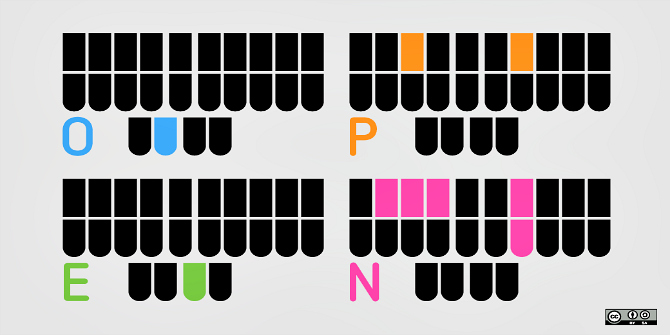 Higher education and research institutions are increasingly coming to terms with the issue of gender inequality. However, efforts to move in this direction are often isolated and difficult to compare and benchmark against each other. In this post, Caroline Wagner presents a new initiative from the Centre for Science and Technology Studies at Leiden (CWTS), to assess gender inequality in research publication across different institutions internationally and drive further change in the sector.
Higher education and research institutions are increasingly coming to terms with the issue of gender inequality. However, efforts to move in this direction are often isolated and difficult to compare and benchmark against each other. In this post, Caroline Wagner presents a new initiative from the Centre for Science and Technology Studies at Leiden (CWTS), to assess gender inequality in research publication across different institutions internationally and drive further change in the sector.
An extensive literature records the inequality faced by women in academia, whether it be promotion, citation of their work, funding of their proposals, recognition of their teaching, or the disproportionate amount of their time sunk in service to academia. Biases in the academy result in lower salaries for women, hiring discrimination, lower numbers of female full professors, and fewer women in academic administration. Women publish less, are underrepresented on editorial boards and are less frequently awarded academic prizes. The sciences in particular have an egregious record of bias. The Guardian rightly noted, “Female academics face huge sexist bias—no wonder there are so few of them”, and indeed, women “leak” out of the educational and professional system at rates higher than men. As Easterly & Ricard (2011) find; “[i]nstitutions of higher education today remain gendered institutions, with males holding the majority of professorships and upper administrative positions, such as president and provost….” (p.63).
Why are outcomes so persistently different for women than for their male counterparts? The question is especially apt for academia, where there exists a sincere commitment to egalitarian principles, and where professors defend and teach the benefits and moral rightness of equality. Addressing this question in the 1970s, Zuckerman and Cole suggested a “Triple Penalty” for women: That it is culturally inappropriate for women to seek such careers; that women view themselves as less competent; and that women face actual discrimination in the workplace. The first two of these penalties have effectively been barred from polite and scholarly discourse; the last remains prominent. Since the Zuckerman and Cole’s work, we can add a fourth “penalty”: unconscious/implicit bias. Handelsman et al (2005) and Carnes et al (2012) theorized and researched the role of an unconscious bias in gendered interactions. Enough evidence emerged from their research that they developed training to help reduce bias in specific workplaces.
Philosopher Kate Manne goes one step further in The Logic of Misogyny to suggest the gaps represent systemic misogyny. She notes: “…a misogynist social environment may but not need be the product of individual agents’ bigotry.” (p. 61). and further: “The hostility they [sic] display to women who disrupt or pose a threat to gendered social hierarchies, say, is compatible with their being egalitarians in the abstract….a misogynist social environment may be partly the result of more or less well-intentioned people acting out of disavowed emotions…” (p. 61). A reason for persistent unequal outcomes in higher education and research are therefore actions that are collective, systemic, and normalised, possibly beyond the conscious decision making of an individual.
Collective issues require collective responses and most academic leaders would profess full personal and institutional commitment to gender inclusiveness, but how can this progress be tracked? Most universities issue an equality report, but there is little accountability or sanction for failing to reach goals. One way forward would be to develop accountability goals and measures to track them. However, no organization ranks higher education institutions according to indicators of inequality.
As one step in this direction, on May 15, the Center for Science & Technology Studies (CWTS) at Leiden University—originators of the Leiden Rankings—is introducing a ‘gender indicator’ for 963 universities. As a first-of-its-kind measure, the indicator ranks institutions by percentage share of publications (male/female), derived from author names and addresses in scholarly articles. Determining gender is a gnarly task. CWTS has developed a name-based gender dictionary to assign gender. Of course, even with a dictionary, many names, like Dana or Fang, remain ambiguous (these records are removed). (The average number of unassigned names is 10%; Chinese universities are closer to 40-50%.) However, to a reasonable extent, gender can be assigned and aggregated to a percentage share for each of the universities in the Leiden Ranking.
Like the recently proposed “Global Gender Gap”, the Leiden ranking begins with what can be measured with existing data. It can therefore only be one part of a larger system, and a bigger project. Any assessment of equity would need to be combined with other measures such as salaries, promotion rates, service burdens, and culture. This remains to be done.
Figure 1: shows the percentage share of female authorship by higher education institution in the United Kingdom. All of the institutions are below 50 percent, with London School of Hygiene & Tropical Medicine, and King’s College London topping the list. The more elite institutions fall far down the list. The percent share of authorship tracks closely with the representation on the faculty. University of Oxford, for example, has about 30% female faculty, and the percentage share of authorship is 30 percent.
The global results turn up unexpected findings. The countries where universities show majority female authorship (>50%) are Poland, Serbia, Brazil, and Thailand. It is notable that those universities scoring highest on female participation tend to be medical ones, such as the Medical University of Lublin (Poland), reflecting publications in life and earth sciences, in particular.
When sorting the listing simply on numbers of female authors, the list looks more intuitive. Here we see the leading universities are prestigious names in the United States (Harvard #1), Brazil (São Paulo #1), Canada (Toronto #1), Australia (Melbourne #1) , UK (UCL #1); Italy (Sapienza #1), and China (Shanghai #1). However, in this list, too, the percentage share of female authorships is only about 30 percent—a finding that echoes Cassidy Sugimoto and colleagues’ finding that, globally, women account for fewer than 30 percent of authorships. Sadly, the percentage share shows almost no change over the time period studied, 2006-2017.
The highly aggregated numbers obscure many variations by field. Universities that lead in nursing, social work, and other traditionally ‘female’ fields have a higher percentage of female authorship. Universities leading in engineering and computer sciences, and other traditionally ‘male’ fields, have higher percentages of male authorship than the average. For example, at 78 percent male/22 percent female, MIT is among the most ‘male’ of universities.
No one indicator can give a full picture of inclusiveness, and further exploration of gender participation is needed at the disciplinary levels. As it stands now, as a step towards quantification, the Leiden gender indicator is a mirror to hold up to the academy, offering an opportunity for self-reflection and a baseline against which improvements for female participation can be seen over time.
Featured image credit: Crystal Kwok via Unsplash (Licensed under a CC0 1.0 licence).
Note: This article gives the views of the author, and not the position of the LSE Impact Blog, nor of the London School of Economics. Please review our comments policy if you have any concerns on posting a comment below.
About the author
Caroline S. Wagner studies international science and technology policy. She holds the Ambassador Milton A. and Roslyn Z. Wolf Chair in International Affairs at the John Glenn School of Public Affairs, The Ohio State University, Columbus, Ohio, USA. Her work focuses on methods and measures to understand the value of government investment in science and technology. Dr. Wagner earned her doctorate from the University of Amsterdam in Science and Technology Dynamics; a Master of Arts degree in Science, Technology and Public Policy from George Washington University; and a Bachelor of Arts from Trinity College. Her most recent book, The Collaborative Era in Science, describes how research has become more team-based over time.









